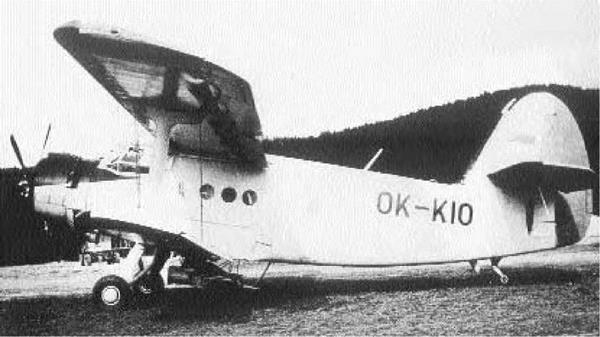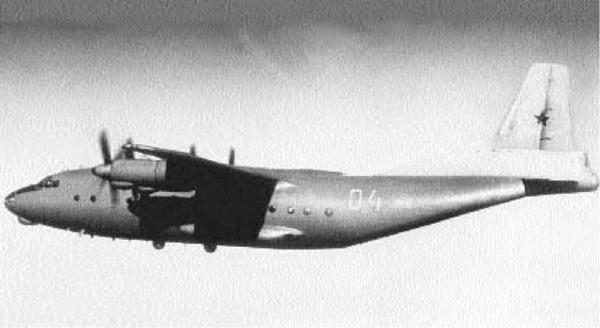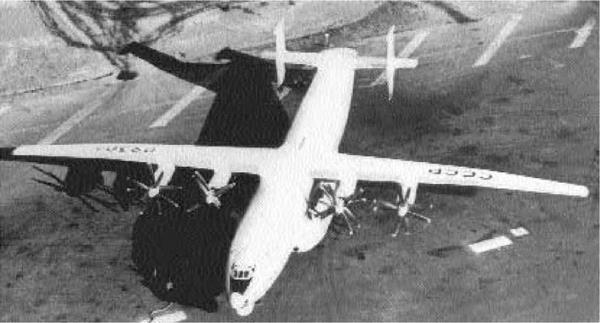. О Ansaldo SVA 5 Primo
Type: Reconnaissance
Dimensions: wingspan, 29 feet, 10 inches; length, 26 feet, 7 inches; height, 8 feet, 8 inches
Weights: empty, 1,521 pounds; gross, 2,072 pounds
Power plant: 1 x 265-horsepower SPA liquid-cooled in-line engine
Performance: maximum speed, 140 miles per hour; ceiling, 22,965 feet; range, 450 miles
Armament: 2 x 7.7mm machine guns
Service dates: 1918-1929
|
T |
he handsome Ansaldo craft conducted some of the longest and most impressive reconnaissance flights of World War I. They continued this tradition after the war and established many long-distance records.
In 1916 the Ansaldo firm began constructing a new high-performance fighter craft as a private company venture. It fell upon Umberto Savoia and Rodolfo Verduzio to design the prototype, which flew in March 1917. The SVA 4 was a good-looking biplane that employed “W”-shaped Warren struts along the wings, thus dispensing with the need for bracing wires. The wings themselves were of slightly unequal length, with the top possessing rakish ailerons and the bottom several degrees of dihedral. The slender fuselage was plywood-covered and tapered to a point past the cockpit, affording the pilot excellent rearward vision. Flight trials revealed that the SVA 4 possessed good performance, but it was too stable for fighter tactics. It therefore entered production as a reconnaissance craft and, in
slightly modified form, joined the service in March 1918 as the SVA 5 Primo.
The single-seat Ansaldo designs accumulated a brilliant wartime career and were among the best aircraft of their class in the world. This fact was borne out by the many dangerous long-range reconnaissance missions seemingly performed with ease. On May 21, 1918, a pair of Primos crossed the Alps at high altitude, successfully photographed military installations at Friedrichshafen, Germany, and completed a flight of 435 miles. But the most famous Ansaldo mission happened on August 9, 1918, when six modified aircraft, accompanied by the poet Gabrielle di Annunzio, flew 300 miles to Vienna, dropped leaflets for half an hour, and returned after a 620-mile sojourn. Many other such flights were recorded.
The SVA 5s remained in service long after the Armistice. In 1920 five set out on an across-the – world venture from Rome to Tokyo, covering 11,250 miles in 109 flying hours. Production concluded in 1927, following a run of 2,000 machines.

Type: Liaison; Transport
Dimensions: wingspan, 59 feet, 8 inches; length, 42 feet, 6 inches; height, 13 feet, 9 inches
Weights: empty, 7,605 pounds; gross, 12,125 pounds
Power plant: 1 x 1,000-horsepower Shvetsov Ash-621R radial engine
Performance: maximum speed, 157 miles per hour; ceiling, 14,425 feet; range, 562 miles
Armament: none
Service dates: 1947-
|
T |
he ubiquitous An 2 was built in greater numbers than any aircraft since World War II. Antiquated looks belie incredible ruggedness and adaptability, and it still serves in no less than 30 countries around the world.
Oleg Antonov, who spent most of his youth designing gliders, finally established his own aviation design bureau in 1947. From the onset his desire was to manufacture multipurpose aircraft capable of operating anywhere. His first design, the An 2, was originally intended as an agricultural airplane for the Soviet Union’s Ministry of Agriculture and Forestry. He deliberately chose a biplane because of the prodigious lifting qualities such machines possess, as well as ease of handling at low altitude. The big An 2 is built entirely of metal, save for fabric – covered control surfaces, and is unique among biplanes in that the fuselage completely fills in between the two wings. The wings themselves are joined to each other by use of a single “I” strut and utilize such advanced devices as slotted trailing flaps and ailerons that automatically droop at low
speed. Consequently, An 2s display superb STOL (short takeoff and landing) characteristics and are also rugged and easily maintained. The Antonov factory built “only” 5,000 An 2s in the Soviet Union before production halted. However, the torch was then passed to Poland’s WSK-Mielec factory, which manufactured another 18,000. China has also built 1,500 for its own purposes. Total An 2 production, worldwide, is estimated in excess of 30,000! It remains the last mass-produced biplane.
This hulking aircraft was eventually employed by 30 air forces around the world and in a bewildering variety of tasks. Most military establishments employ it as a transport, but it has since been adopted to crop-spraying, glider-tugging, navigation training, and parachute transport. It can also be fitted with skis to operate from snow. The Soviets recommenced production of An 2Ms in 1964, which featured bigger control surfaces and a variable-pitch propeller. Antonov’s homely prodigy remains one of the world’s great transportation aircraft. The NATO designation is COLT.

Type: Transport; Reconnaissance
Dimensions: wingspan, 124 feet, 8 inches; length, 108 feet, 7 inches; height, 34 feet, 6 inches
Weights: empty, 61,728 pounds; gross, 134,480 pounds
Power plant: 4 x 4,000-horsepower ZMBD AI-20K turboprop engines
Performance: maximum speed, 482 miles per hour; ceiling, 33,465 feet; range, 3,542 miles
Armament: 2 x 23mm cannon
Service dates: 1960-
|
F |
or many years, the An 12 constituted the backbone of Soviet heavy airlift forces. It still functions today in the guise of a reconnaissance and electronic intelligence-gathering platform.
The perfection of turboprop technology by the mid-1950s ushered in a new era of military transportation. Higher power levels at greater economy, in turn, led to larger airplanes being built. The first of these, Lockheed’s famous C-130 Hercules, inspired the Antonov design bureau to provide the Soviet Union with a craft of equal utility. The An 12 was developed in 1958 and, like the Hercules, is a high-wing monoplane with an upswept rear section. The pressurized fuselage is completely circular in cross-section and possesses large landing gear fairings on either side. But unlike the American craft, the An 12 sports an integral rear loading ramp that can be folded and stored. Antonov’s machine is also unique in mounting a tailgun position immediately below the rudder. It was a powerful addition to the Red Air Force after
becoming operational in 1960, and it could lift up to 20 tons of light tanks and trucks or 100 paratroopers while operating from the crudest landing strips. The An 12 therefore gave the Red Army a strategic mobility never before possessed. An estimated 850 of these brutish transports, designated CUB by NATO, were built by 1973.
As would be expected, the An 12 saw widespread use among the Warsaw Pact and other nations sympathetic to the Soviet Union. In addition to transportation duties, it also made an ideal platform for electronic espionage, with three versions being built. The CUB A was an interim type with bladelike antennas on the forward fuselage. The CUB B was fitted with two prominent belly radomes in addition to blade antennas, and the CUB C, sporting the usual array of antennas, had the tail turret deleted in favor of a radome. Most Russian An 12s have since been retired on account of wing-spar fatigue. Other major users, like India, are looking for jet-powered replacements.

Type: Transport
Dimensions: wingspan, 211 feet, 4 inches; length, 190 feet; height, 41 feet, 1 inch
Weights: empty, 251,323 pounds; gross, 551,146 pounds
Power plant: 4 x 15,000-horsepower KKBM NK-12MA turboprop engines
Performance: maximum speed, 460 miles per hour; ceiling, 24,605 feet; range, 6,804 miles
Armament: none
Service dates: 1967-
|
T |
he mighty Antei was once the world’s largest airplane and established several weight and altitude records that still stand. Despite its sheer bulk, it handles well and operates easily from unprepared airstrips.
Russia is characterized geographically by huge distances and varied topographical features that can make surface travel difficult, if not impossible. Air transportation is a possible solution, but this means that equipment must ferry huge quantities of cargo and supplies in order to be meaningful. In 1962 the Antonov design bureau was tasked with constructing a huge transport plane to facilitate the shuttling of military goods and services around the country and the world. In only three years, a functioning prototype emerged that stunned Western authorities when unveiled at the Paris Air Salon in 1965. The massive An 22 Antei (Antheus, after a huge son of Neptune in Greek mythology) was a well-conceived enlargement of the previous An 12. Like its predecessor, it was circular in cross-section and possessed wheel fairings
under the fuselage. It also sports a capacious cargo hold and a pressurized crew and passenger cabin. To facilitate operations off wet and unprepared airstrips, pressurization of the six pairs of wheels is controllable from the flight deck and can be changed in midair to suit any landing surface. The secret to the An 22’s prodigious hauling ability is found in the trailing-edge flaps. These are designed to utilize the powerful prop wash flowing over the wing from the four contrarotating turboprop engines and provide added lift. Its military implications were obvious, and since 1969 an estimated 100 of the giant craft have been built and deployed. The NATO code name is COCK.
The An 22 was the world’s biggest airplane following its debut and established many useful world records. The only Soviet transport capable of freighting a T-72 tank, it was employed by the USSR as a propaganda machine during many “humanitarian” flights abroad. This giant reigned supreme until 1968, when an even larger craft, Lockheed’s C-5A Galaxy, premiered.










